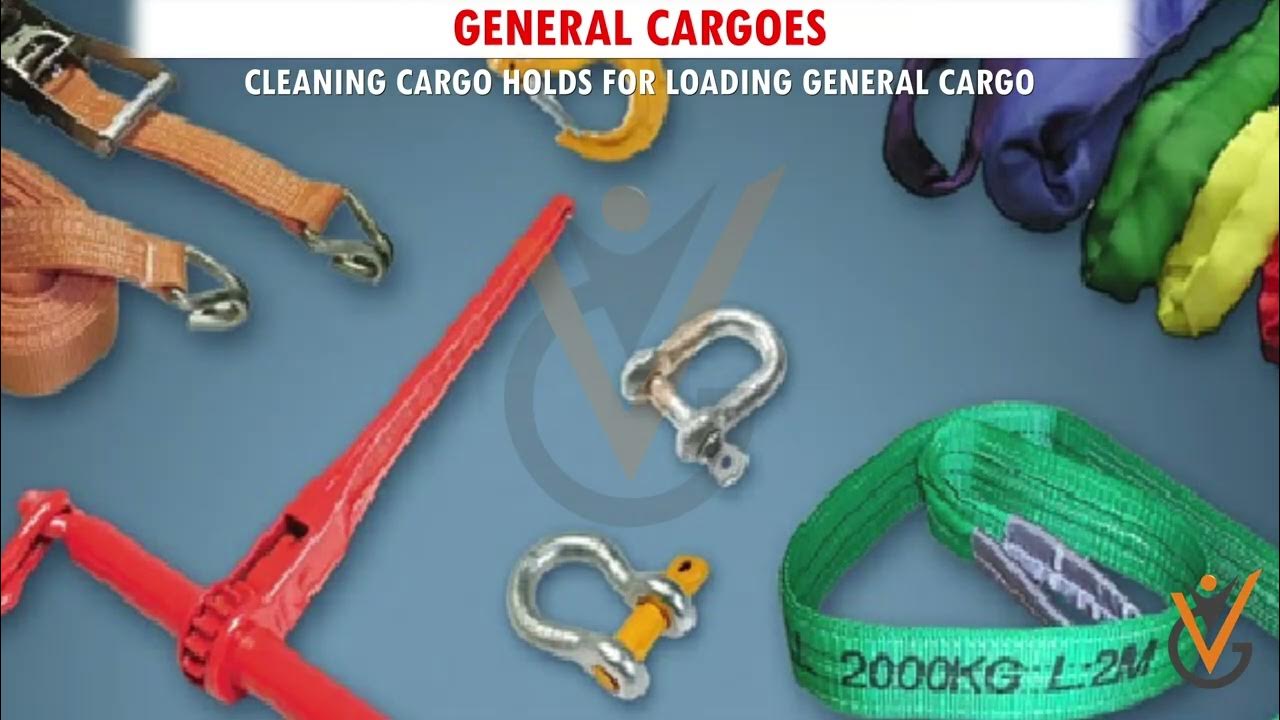Transport Operations Of Dangerous Goods
Summary
TLDRThis script outlines the critical knowledge required for safely handling and storing dangerous goods on ships, emphasizing the importance of segregation to prevent hazards. It covers storage categories, precautions for various classes of dangerous goods, emergency response, and the necessity of special certificates for certain shipments. The guide ensures compliance with the IMDG Code for protecting crew, cargo, and the environment during maritime transport.
Takeaways
- 📚 The chapter aims to provide a working knowledge of storage and handling precautions for dangerous goods during maritime transport.
- 🚢 Different vessel types, such as cargo ships and passenger ships, have specific handling procedures for packages, vehicles, and containers with dangerous goods.
- 🔥 Fire is a major hazard, and understanding how to restrict or prevent it is crucial for the safety of the cargo and the vessel.
- 📦 Segregation is a process to avoid problems between adjacent packages in the event of an emergency, ensuring the safe stowage of dangerous goods.
- 🏷️ There are specific storage categories (A, B, C, D, and II) that dictate where dangerous goods can be stowed on different types of ships.
- 🚫 Certain dangerous substances are prohibited from being transported on passenger ships carrying more than 25 passengers.
- 🛢️ Drums containing dangerous goods must always be stowed upright, unless authorized otherwise by a competent authority.
- 🚫 Storage of certain articles, like class 1 explosives and fiberboard boxes, is restricted to prevent exposure to seawater and damage.
- 🌡️ Special attention is needed for substances that require protection from radiant heat and large temperature variations.
- 🚫 Dangerous cargo must be stowed away from living quarters, machinery spaces, and other work areas to prevent the risk of hazardous vapors spreading.
- 📋 Special certificates, exemptions, and approvals are sometimes required for the transportation of certain dangerous goods by sea, as detailed in the IMDG Code.
Q & A
What is the primary objective of the chapter discussed in the transcript?
-The primary objective is to secure a limited working knowledge of storage, particular precautions, segregation, cargo transport units on specific vessel types, temperature control, provisions, the transport of wastes, and the understanding of exemptions, approvals, and certificates related to the transportation of dangerous goods by sea.
What is stowage in the context of dangerous goods on a ship?
-Stowage refers to the way that packages and substances are loaded onto a ship, which is crucial to avoid potential problems that adjacent packages can have on each other in case of an emergency.
What is the purpose of segregation in the context of dangerous goods on a ship?
-Segregation is a process to avoid problems that adjacent packages can have on each other in the event of an emergency, by ensuring that incompatible goods are kept separate to prevent hazardous situations.
How are ships categorized for the purpose of making appropriate storage recommendations for dangerous goods?
-Ships are divided into two groups: cargo ships or passenger ships carrying a limited number of passengers (maximum of 25 or calculated as 143 meters of the ship's length), and other passenger ships carrying a larger number of passengers.
What are the storage categories for the stowage of dangerous goods on ships?
-There are four storage categories: Category A for cargo or passenger ships with limited passenger numbers, allowing stowage on deck or under deck; Category B, similar to A but restricts stowage to on deck only for other passenger ships; Category C allows stowage on deck only for cargo or passenger ships; and Category D prohibits stowage for other passenger ships.
Why is it important to stow drums containing dangerous goods in an upright position?
-Drums must be stowed in an upright position to prevent leakage or spillage of their contents, which could lead to hazardous situations, unless otherwise authorized by a competent authority.
What are the considerations for stowing packages that are susceptible to water damage?
-Packages susceptible to water damage should be stowed under deck or, if on deck, be located in a protected area to prevent exposure to seawater and weather conditions.
What are the special storage requirements for radioactive materials?
-Radioactive materials require special storage considerations, including separation from foodstuffs, compliance with the IMDG Code, and adherence to specific categories and transport indexes of the consignments, as well as the need for monitoring during shipment.
What is the procedure for handling exposure to a dangerous substance during an emergency?
-In the event of exposure to a dangerous substance, reference is made to the emergency response procedures for ships carrying dangerous goods contained in the IMDG Code supplement and the vessel's safety training manual. Senior officers will provide instructions, and crew members should follow these carefully.
What precautions should be taken when storing cargo transport units containing flammable gases or liquids with very low flash points?
-Special care should be taken to store such units away from potential sources of ignition, such as heating or cooling equipment on refrigerated or heated cargo transport units, and to ensure proper ventilation to prevent the buildup of dangerous vapors.
How are exemptions, approvals, or permits for the transportation of dangerous goods by sea issued and controlled?
-Exemptions, approvals, or permits are issued and controlled by competent authorities, national government departments responsible for enforcing the IMDG Code, or agencies and organizations delegated to carry out related tasks such as testing of packaging.
Outlines

Этот раздел доступен только подписчикам платных тарифов. Пожалуйста, перейдите на платный тариф для доступа.
Перейти на платный тарифMindmap

Этот раздел доступен только подписчикам платных тарифов. Пожалуйста, перейдите на платный тариф для доступа.
Перейти на платный тарифKeywords

Этот раздел доступен только подписчикам платных тарифов. Пожалуйста, перейдите на платный тариф для доступа.
Перейти на платный тарифHighlights

Этот раздел доступен только подписчикам платных тарифов. Пожалуйста, перейдите на платный тариф для доступа.
Перейти на платный тарифTranscripts

Этот раздел доступен только подписчикам платных тарифов. Пожалуйста, перейдите на платный тариф для доступа.
Перейти на платный тариф5.0 / 5 (0 votes)






